Yee-haw! Want to pick a Western film to watch tonight? Maybe you’ve played a game set in the Wild West or watched a video about this time period, and now you’re interested in further exploring the topic?
Don’t fret, pardner – we’re here to offer you a list of the 10 greatest Western movies of all time! Of course, art is subjective, but here we tried to only mention films that are widely considered classics (even outside their genre) while also providing a glimpse into what it was actually like to live in the Old West.
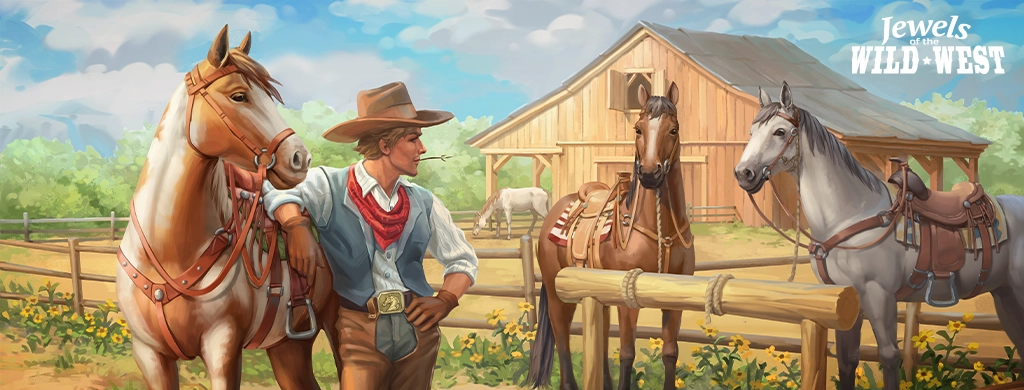
But first… what is a Western?
Western movies, usually set in the American West in the late 1800s, tell tales of heroism, justice, and the clash between civilization and wilderness. They offer thrilling action, memorable characters, and breathtaking landscapes, and they embody the rugged and free spirit of the era. These films are beloved for being both entertaining and thought-provoking, with iconic music that has stood the test of time. The best Western movies provide an immersive experience that captivates audiences and leaves a lasting impact.
Phew! We had to give a clear definition – it’s just good manners. And with that out of the way… here are ten incredible Westerns that we think everyone, especially a genre enthusiast, should see at some point!
10. A Fistful of Dollars (1964)

What’s it about? A mysterious stranger with no name arrives in a Mexican border town, where he becomes embroiled in a conflict between two rival gangs. The stranger manipulates both sides to his advantage, ultimately leading to a violent showdown.
Why is it great? It revolutionized the genre by introducing a new type of protagonist: the anti-hero. Clint Eastwood’s portrayal of The Man with No Name, a morally ambiguous loner who manipulates both sides of a violent conflict for his own gain, created a template for many Westerns to come.
Fun fact: It’s actually a loose remake of the Japanese film Yojimbo (1961), directed by Akira Kurosawa. Director Sergio Leone loved Yojimbo so much that he bought the rights to it and made a Western version.
9. True Grit (1969)

What’s it about? A young girl hires an aging U.S. Marshal to track down and capture the man who murdered her father. Along the way, they are joined by a Texas Ranger and must navigate dangerous terrain and face off against a gang of outlaws.
Why is it great? Because of its memorable characters, including John Wayne’s portrayal of the grizzled, tough U.S. Marshal Rooster Cogburn and newcomer Kim Darby as the young and determined Mattie Ross. The movie also features a well-crafted story that blends humor, action, and drama while showcasing the rugged beauty of the American West. True Grit earned John Wayne his only Academy Award for Best Actor and is widely regarded as one of the best movies of his career.
Fun fact: The actress who played Mattie Ross, Kim Darby, was actually 21 years old when she portrayed the 14-year-old protagonist.
8. The Wild Bunch (1969)
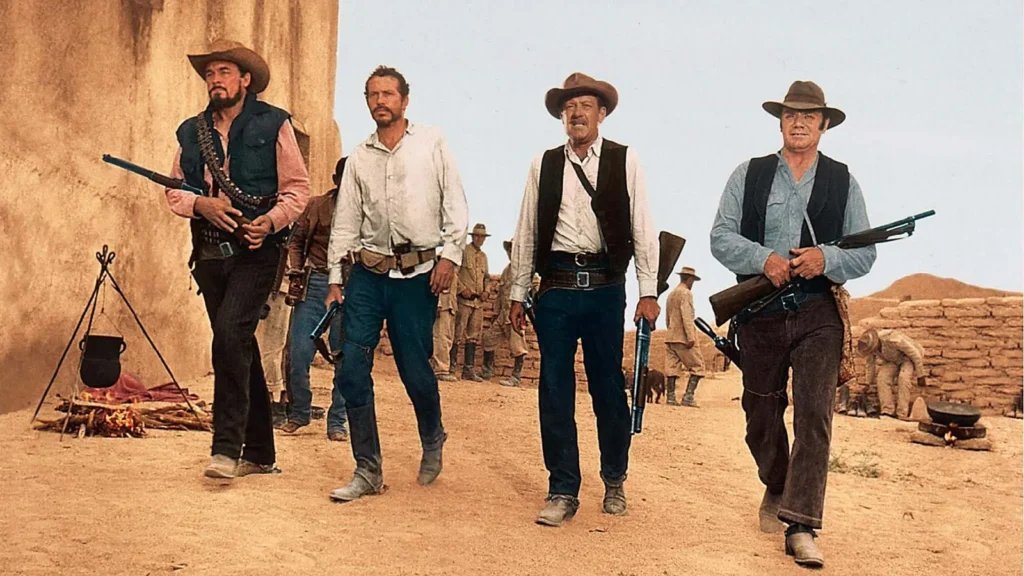
What’s it about? A group of aging outlaws plan one last heist in 1913 Texas while being pursued by a group of bounty hunters hired by a railroad company.
Why is it great? Because of its innovative and influential portrayal of violence and complex characters, plus its unflinching depiction of the changing times in the American West. The movie’s director, Sam Peckinpah, revolutionized the Western genre with his use of slow-motion action scenes and his exploration of themes such as honor, loyalty, and betrayal.
Fun fact: The movie was originally given an X rating due to its violent content, but Peckinpah was able to negotiate it down to an R rating.
7. Butch Cassidy and the Sundance Kid (1969)

What’s it about? Two charismatic outlaws lead a band of robbers in the American West. As law enforcement closes in on them, they flee to Bolivia with their lover to continue their criminal pursuits.
Why is it great? Because of its unique blend of humor, action, and drama. The movie subverts traditional Western tropes by focusing on the relationship between the two charming criminals and their struggle to adapt to a changing world. The chemistry between Paul Newman and Robert Redford, who play the title characters, combined with the iconic soundtrack and memorable cinematography, make this movie a classic of the genre.
Fun fact: Paul Newman and Robert Redford would go on to form one of the most iconic acting duos in cinema history, appearing in a total of three movies together.
6. Once Upon a Time in the West (1968)
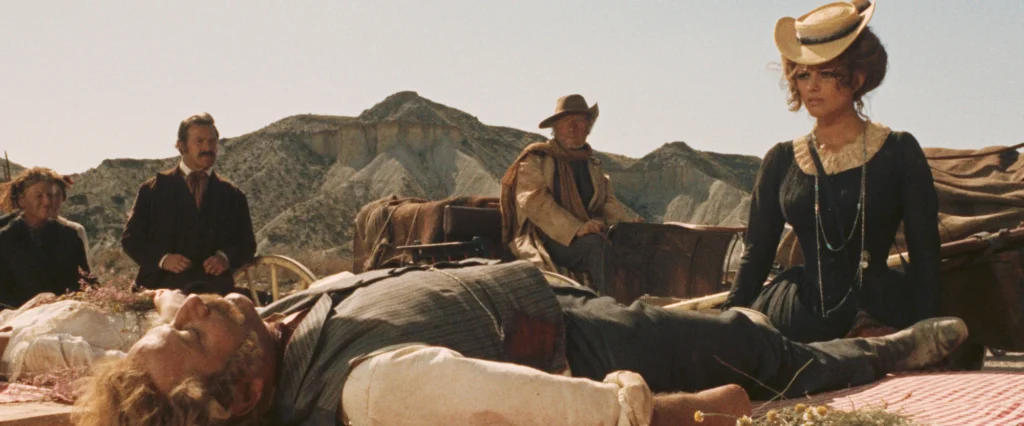
What’s it about? A beautiful and mysterious widow inherits a valuable piece of land in the American West, which leads to a power struggle between a ruthless railroad baron, a revenge-seeking outlaw, and a harmonica-playing stranger with a personal vendetta.
Why is it great? Due to its star-studded cast, stunning visuals, iconic score by Ennio Morricone (featuring a haunting main theme that has become one of the most recognizable pieces of film music ever written), multi-dimensional characters, and innovative storytelling that both pays homage to and pushes the boundaries of the Western genre.
Fun fact: Director Sergio Leone was notorious for his meticulous attention to detail. During the filming of the scene in which Frank (played by Henry Fonda) shoots a fly, Leone reportedly made Fonda shoot the scene over 50 times in order to get the shot just right. And the movie’s climactic shootout, which takes place in the town of Flagstone, was shot on a massive set that took over six months to build.
5. Shane (1953)

What’s it about? A mysterious and skilled gunslinger named Shane drifts into a Wyoming homestead and becomes embroiled in a conflict between a group of homesteaders and a powerful rancher who wants to force them off the land. He must choose whether to continue living the life of a drifter or take up arms to protect the homesteaders and their way of life.
Why is it great? Because of its powerful performances, stunning cinematography, and exploration of themes like morality and heroism. The movie also features iconic scenes and characters that have become ingrained in the popular consciousness.
Fun fact: The final scene of Shane riding off into the mountains was not in the original script. The filmmakers came up with the idea during production, and it has since become one of the most memorable endings in movie history.
4. Unforgiven (1992)
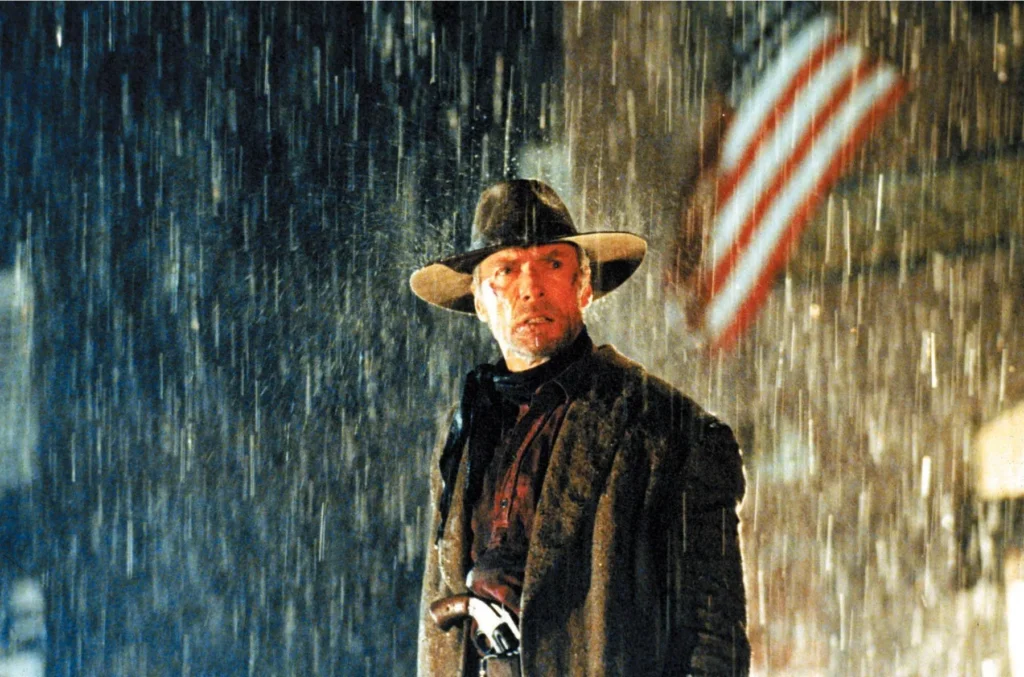
What is it about? A retired, aging gunslinger is recruited by a young man to help him collect a bounty on two men who mutilated a prostitute in a small town. He reluctantly agrees, but as he sets out on this dangerous mission, he must confront his past and the violence that has defined his life.
Why is it great? Due to its subversion of traditional Western tropes and its exploration of themes such as violence, morality, and the consequences of revenge. The movie features exceptional performances from its cast, particularly Clint Eastwood in the lead role and Gene Hackman as the villainous sheriff.
Fun fact: The movie was shot on location in Alberta, Canada, and the production team built a full-scale Western town for the movie.
3. High Noon (1952)
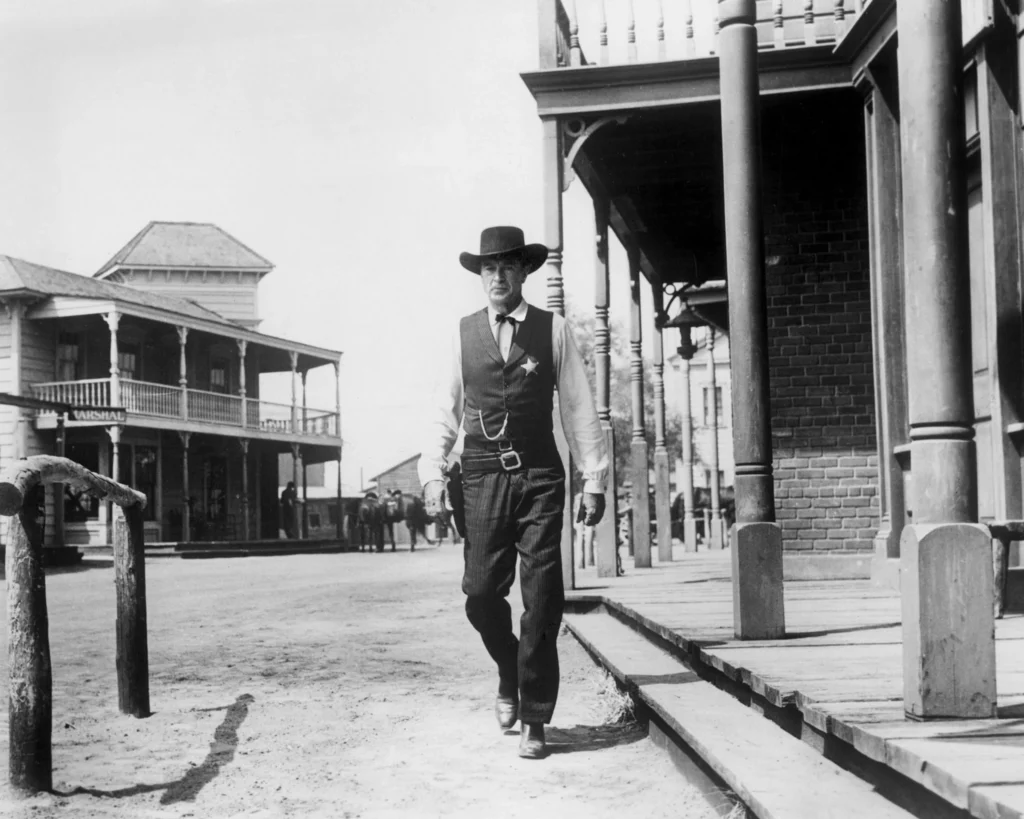
What’s it about? The movie follows a retired U.S. Marshal who learns that a criminal he sent to prison is returning to town on the noon train to seek revenge. With no help from the townspeople, he must face the criminal and his gang alone, leading to a tense and dramatic showdown.
Why is it great? Due to its unique and innovative storytelling structure, gripping tension, and memorable performances by Gary Cooper and Grace Kelly. Director Fred Zinnemann’s use of real time and intercutting between multiple storylines added a new level of suspense to the genre and influenced many later movies. The movie’s themes of loyalty, duty, and standing up for what is right continue to resonate with audiences today.
Fun fact: High Noon was filmed in “real time,” meaning that the events of the movie take place over approximately 85 minutes, which is the actual running time of the movie.
2. The Searchers (1956)

What’s it about? The movie follows a Civil War veteran who sets out to find his niece, who has been kidnapped by the Comanche. Along the way, he encounters various obstacles and struggles with his own hatred of Native Americans.
Why is it great? Due to its exploration of complex themes such as racism and revenge, as well as its iconic performances by John Wayne and Natalie Wood. Director John Ford’s use of breathtaking landscapes and nuanced storytelling helped elevate the movie beyond a typical Western and solidify its place in cinematic history.
Fun fact: The movie’s opening shot of a doorway with the landscape behind it has become iconic and often imitated in many other movies.
1. The Good, the Bad and the Ugly (1966)
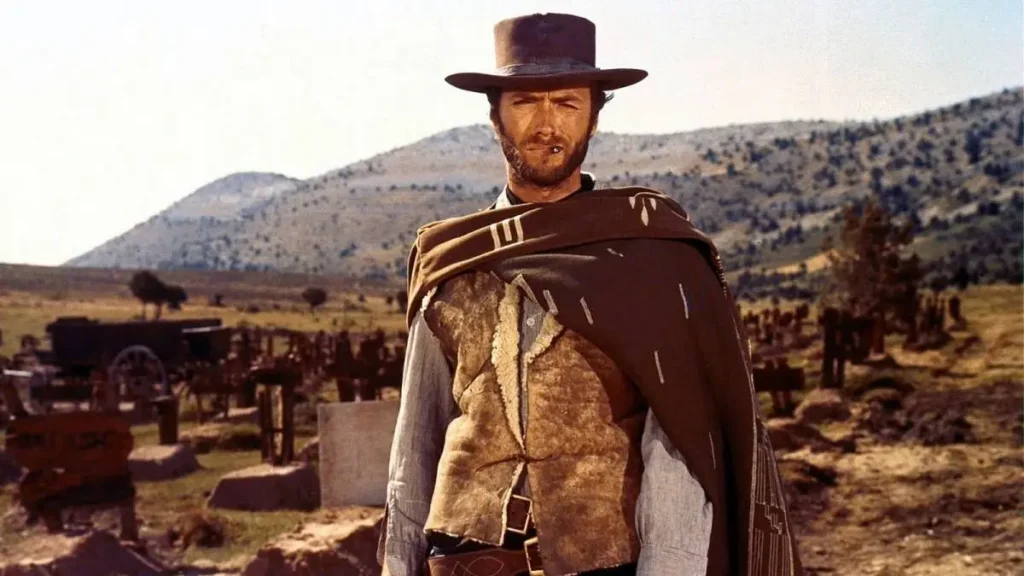
What’s it about? The final film in the “Dollars Trilogy” featuring Clint Eastwood’s Man with No Name, the movie follows three gunslingers, each of whom is after a cache of Confederate gold buried in a cemetery. Along the way, they encounter various obstacles and enemies, leading to a climactic showdown between the three men.
Why is it great? Due to its epic story, complex characters, and masterful score by Ennio Morricone. Director Sergio Leone’s innovative camera techniques and editing contribute to the movie’s unique style and sense of grandeur, and the movie’s lasting impact on pop culture cements its place as a masterpiece of the genre.
Fun fact: Sergio Leone was known for his close-ups, and there are over 500 of them in the movie.

And that’s our top 10!
If you like the setting of the Wild West, you will definitely enjoy our games:
In both of them, you take on the role of mayor and are tasked with rebuilding a struggling frontier town in a faraway corner of the Old West while investigating the gang responsible for the devastating attacks that nearly destroyed the town.
These games are available on all major platforms.